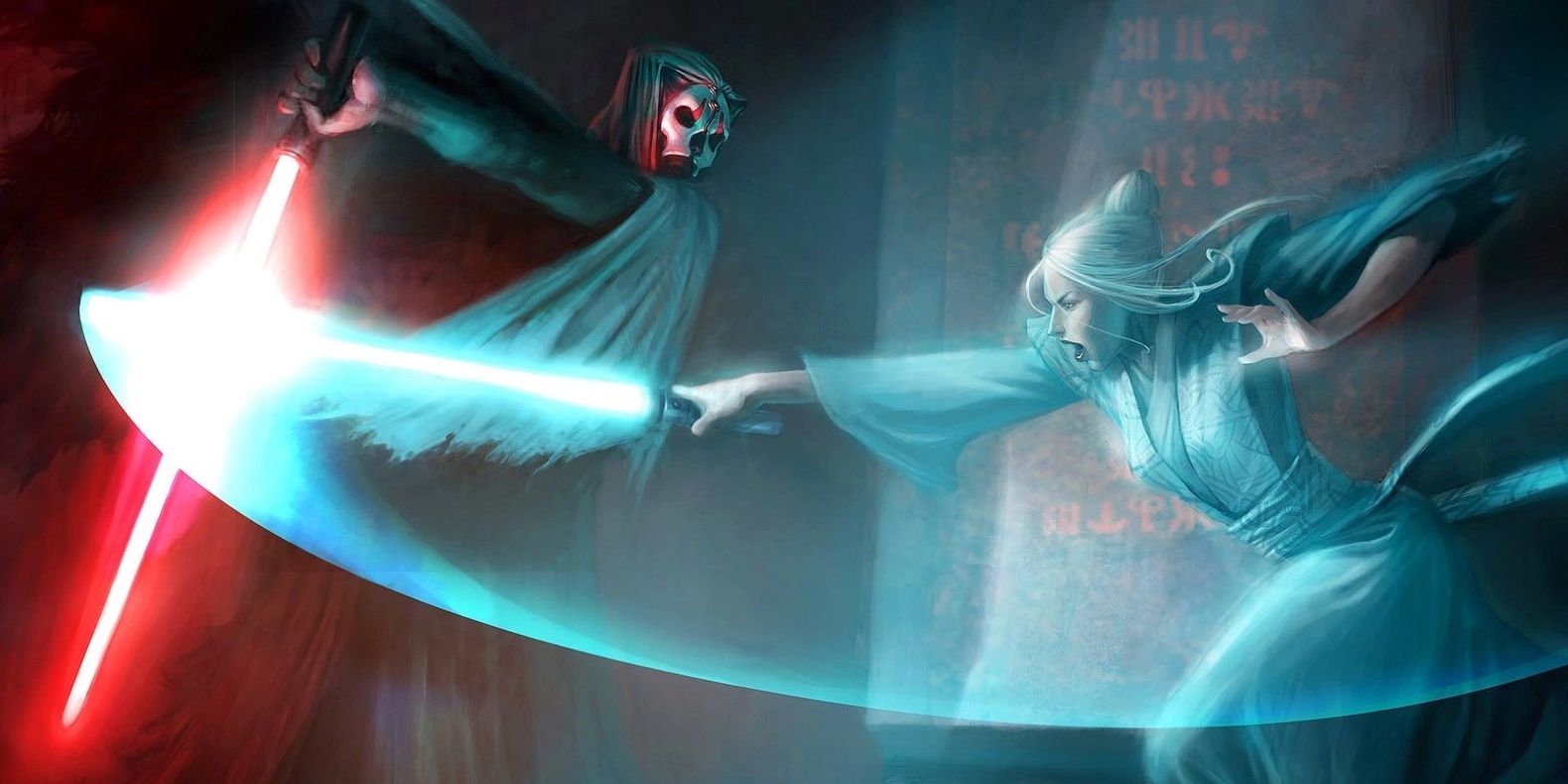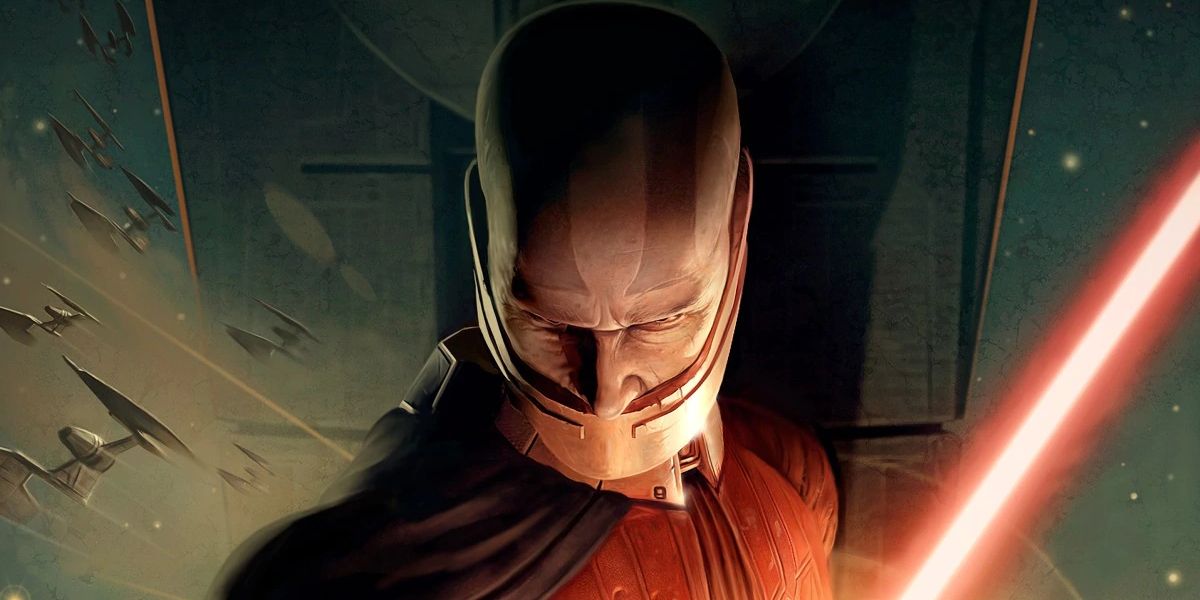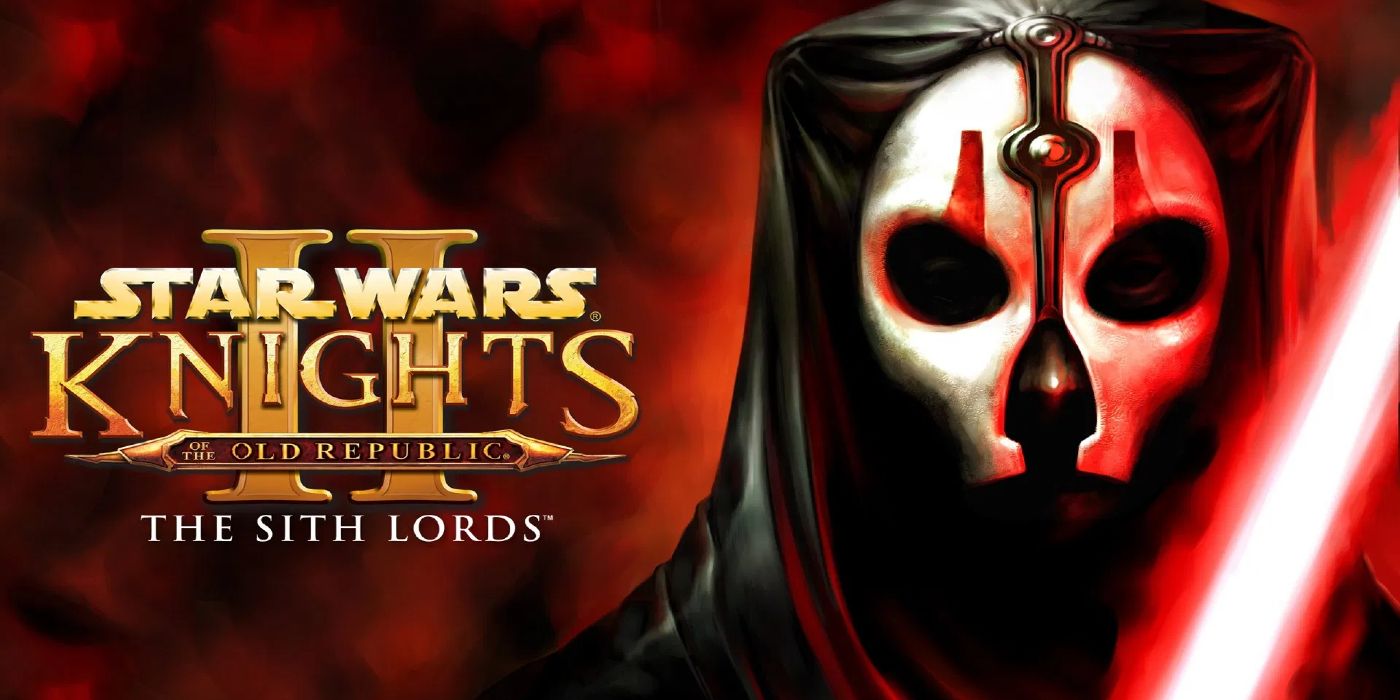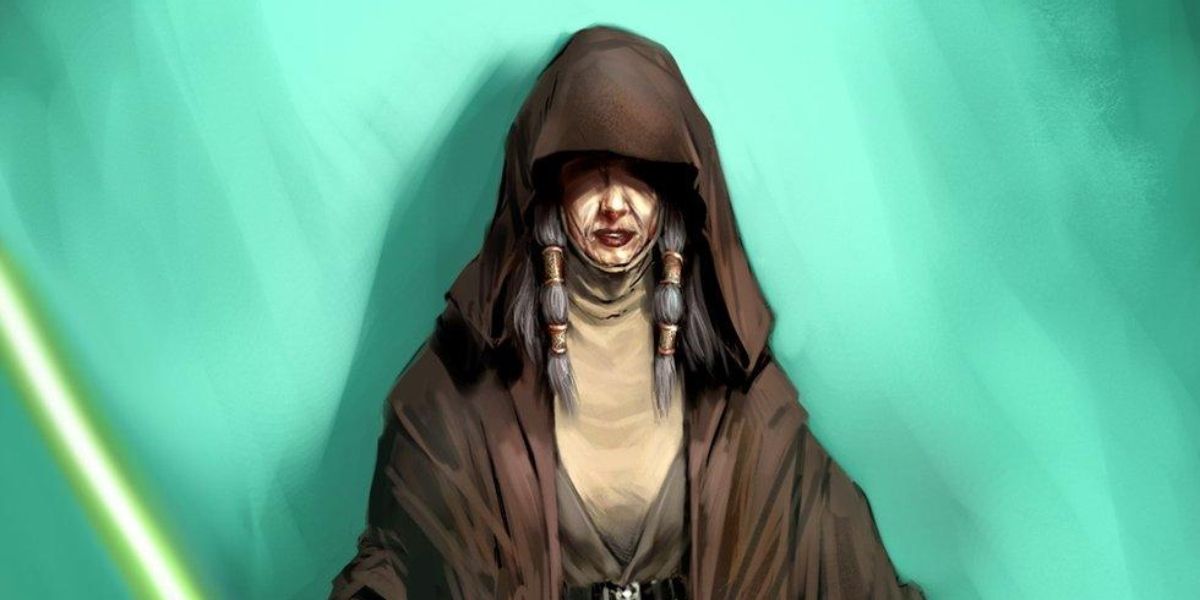In the Star Wars films, Jedi are always positioned as a force of good in the galaxy. While this depiction has solidified many fans' perception of the group, Jedi have been shown to operate in morally gray areas. The Star Wars: Knights of the Old Republic games in particular explore some of the Jedi Order's darker sides and questionable decisions, proving that they aren't strictly a force for good.
In KOTOR, players take the role of a Republic soldier that awakens aboard an orbiting cruiser in the Outer Rim amid an onslaught from the Sith Empire. It's soon learned that the formidable Dark Lord of the Sith, Malak, is responsible for the attack in his quest to locate and eliminate the Jedi Bastilla Shan.
Revan, Begin Again
Bastilla had known Malak and his former mentor, Revan, before the Mandalorian Wars, proving herself adept in the powerful Force ability known as Battle Meditation. Understanding the threat Bastilla and her abilities could pose to his plans, Malak makes his hunt for Bastilla a top priority during his war against the Republic.
During the Mandalorian Wars, Revan and Malak left the Jedi Order, recruiting Jedi to their side and criticizing the Orders' continued inaction during the conflict. Sometime after the war concluded, Revan and Malak would fall to the Dark Side of the Force, declaring themselves leaders of a new Sith Empire and returning to Republic space wielding red lightsabers alongside a massive Sith fleet backed by veterans of the Mandalorian Wars. Their return heralded the start of the Jedi Civil War, a conflict that would almost consume the Republic if not for Malak betraying Revan and claiming their empire for his own.
Before long, the player encounters Bastilla, who is undertaking a quest to stop Malak and end the Jedi Civil War. At the climax of their journey, players learn their character is Revan, the previous Lord of the Sith and former Jedi that turned their back on the Order. After Malak's betrayal, Bastilla found Revan and brought them to the Jedi Council. The Council decided the best course of action was to use the Force to wipe Revan's mind and replace their memories and personality with one loyal to the Republic.
Not only does KOTOR show the fragility of these supposed iron-willed warriors, but it also introduces several moral dilemmas the Jedi find themselves at the center of. The most notable is that the Jedi intentionally erased a person's identity and replaced it with one that served their purposes.
There's also the issue of Jedi that rallied to Revan and Malak ultimately turning to the Dark Side over what amounts to political disagreement with their superiors. On top of this, throughout KOTOR, the player is given a choice to deal with social and political situations. Though the options reflect either Light or Dark Side leaning decisions, there are complex situations where the answer isn't black and white.
Kreia the Gray
In KOTOR II, the moral ambiguity of the Jedi and the Force comes to a head throughout the narrative. The player character is the Exile; a Jedi cast out by the Order for rallying to Revan's side during the Mandalorian Wars. After a failed assassination attempt leaves the Exile wounded and unconscious, they are saved by Kreia and taken aboard a fleeing vessel. Kreia is a former Jedi Master who informs the Exile they are being hunted by two powerful Sith Lords, the same two responsible for nearly eliminating the Jedi Order. With the Exile's connection to the Force severed, Kreia takes it upon herself to shape the Exile with her guidance.
Despite Kreia's role as mentor, it's clear she despises the Force, holding the view that it exerts an element of control over Force-sensitive beings that strips them of their free will. Later on, players learn that, along with being the former Jedi Master of Revan, Kreia was also a Sith Lord. Known as Darth Traya, she sought to strike back against the Jedi Council that exiled her in the aftermath of the Mandalorian Wars. She took the two who would become Darth Nihilus and Darth Scion as apprentices and promised to assist in their personal goals if they complied with her desire to destroy the Jedi. However, the three had a falling out, and Kreia was betrayed by Force-users yet again.
At this point, Kreia resolves to use Force-wounds, a weakness or deafening in the fabric of the Force caused by large-scale traumatic events, to "deafen" the Force throughout the galaxy and cut Force-sensitives from its reach. The Exile and Kreia shared a bond that she had hoped to manipulate to reach her goal. This revelation leads to a final confrontation between Kreia and the Exile, where she is ultimately defeated.
Kreia exists throughout KOTOR II as a means to explore the darker sides of the Jedi and the Force. She sees the Force as manipulative, bending users to its desire rather than let them lead a life of free will. To her, the Jedi are all too eager to blame Revan's fall and the subsequent Civil War on her teachings. Kreia's interpretation of the Sith is that they're cannibalistic, turning on one another over petty disagreements and power accumulation.
To Kreia, the Force is a nuisance that makes its users dependent and servile, something Star Wars hasn't really covered in depth. In Kreia's words, "Take the greatest Jedi Knight, strip away the Force, and what remains...you will see nothing more than a woman, or a man. A child." While she may be the villain in this situation, she isn't wrong.




